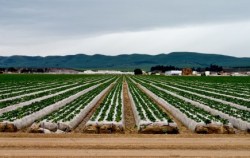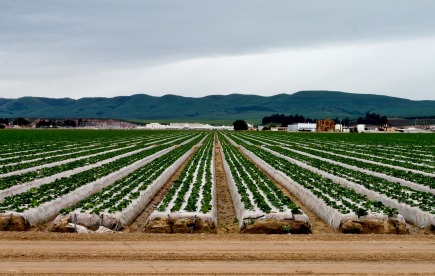
Rigid rules for leafy greens are taking a toll on wildlife.
A deadly outbreak of E. coli in 2006, traced to a California spinach field, spurred an overhaul of food-safety regulations in the leafy-greens industry — and that’s got to be a good thing, right? Not so fast, says a study published last week in the journal Nature. Those regulations have contributed to a major loss of ecosystem diversity in California’s Salinas Valley, while at the same time doing little to alleviate the risk of food-borne illness.
In an effort to reduce the potential for contamination, the industry put in place standards that, while technically voluntary, quickly became widespread. Big produce buyers, fearing further disease outbreaks and the public-relations disasters they create, only want to do business with farmers conforming to the new guidelines. “Nationwide, U.S. fruit and vegetable farmers report being pressured by commercial produce buyers to engage in land-use practices that are not conducive to wildlife and habitat conservation, in a scientifically questionable attempt to reduce food-borne illness risk,” the study reports.
Scientific American describes what this ends up looking like:
Researchers discovered that the new farming practices have further de-incentivized growers from farming in ways that take into account the importance of natural systems of resource cycling and plant regeneration. Instead, many have cleared land of native vegetation, erected fences and laid poison to deter the presence of wildlife. As a result of growers’ attempts to control for all potential variables on crop sites, farmed areas have become not only uninhabitable for wildlife but also more vulnerable to climate change.
The Salinas Valley is not only an important agricultural area — California’s “salad bowl,” where 70 percent of the nation’s greens are produced — but also an ecological gem, The Guardian writes:
The floodplain habitat is a stopover and feeding ground for migrating birds like the Great Blue Heron, its plains and river harbour a number of endangered species like the steelhead salmon, and the waterway connects with one of the country’s largest marine sanctuaries.
The study found that between 2005 — before the E. coli spinach outbreak — and 2009, the Salinas Valley lost 13 percent of that precious riverside and wetland habitat. Clearing vegetation between crop fields and waterways not only disrupts ecosystems and displaces wildlife, it also gives pesticides and fertilizers an easier path to pollute water supplies, and eliminates natural plant buffers that slow erosion and diminish the impacts of flooding.
The worst part is that these new practices haven’t really done squat for food safety, SciAm writes:
Since the 2006 outbreak of E. coli was linked with spinach grown in California, at least 15 more domestic E. coli outbreaks have been reported. More than half included cases reported in California.
Obviously we want to do everything possible to prevent food — especially spinach, for goodness’ sake, which is supposed to the epitome of healthy — from killing people. But not with misguided, ineffective reforms that endanger the entire ecosystem and thus our ability to grow food in the first place.



